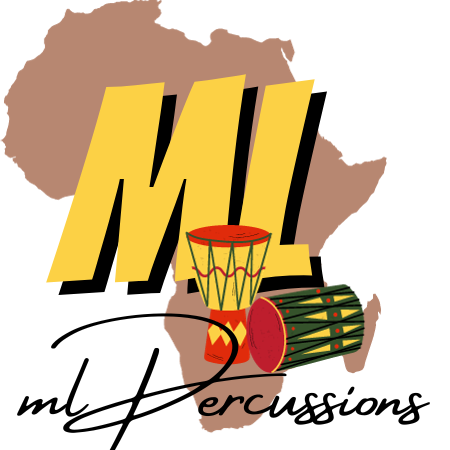Tracing the West African Journey of the Talking Drum
Compartilhar

The journey of the Talking Drum is a fascinating tale of jtradition, evolution, and cultural significance.
In a quiet Yoruba village, as the sun dipped below the horizon.
The steady pulse of a drum echoed through the air.
An elder drummer, seated with his Talking Drum, tapped out a rhythm that spoke without words.
The villagers listened, nodding in understanding—this was more than music; it was a message, a bridge between generations.
This moment captures the essence of the journey of the Talking Drum
Centuries ago, the journey of the Talking Drum began in royal courts and village gathering
It served as a means of communication.
Griots and messengers relied on its tonal precision to announce news, call warriors to battle, and narrate history.
As its fame spread, the drum’s influence moved beyond Yoruba lands, resonating in Ghana, Benin, and Mali.
The journey of the Talking Drum took another turn with the evolution of music.
It became a core element of Afrobeat, championed by Fela Kuti, and later found its way into jazz and hip-hop.
Even in modern music studios, the heartbeat of the Talking Drum still continues.
Though technology has replaced drum messages with digital communication, the journey of the Talking Drum endures.
Every time its rhythm is played, it carries the spirit of the past into the future.
Rooted in Yoruba culture, this unique drum has transcended generations, carrying messages through rhythmic beats.
The talking drum’s journey showcases its vital role in traditional music and its enduring legacy in drum evolution.
Origins of the Talking Drum in Yoruba Culture

The journey begins in the heart of Yoruba culture, where it was used as a tool for communication.
Unlike other percussion instruments, the Talking Drum can mimic human speech, allowing drummers to convey messages over long distances.
This feature made it essential in royal courts, religious ceremonies, and social gatherings.
In early African societies, the Talking Drum was more than just an instrument; it was a medium of storytelling, news dissemination, and even diplomacy.
The drum's evolution from a communication device to a central musical instrument demonstrates its versatility and importance.
How the Talking Drum Shaped Traditional Music
In traditional music, the Talking Drum holds a revered position as a symbol of communication and heritage.
The Talking Drum is closely tied to the development of various African music styles.
It provides rhythm, tone, and melody, making it a staple in performances.
The Talking Drum's ability to produce different pitches allows musicians to create dynamic and expressive beats.
Over time, drummers refined their techniques, enhancing the drum's impact on traditional music.
Today, the Talking Drum remains an essential instrument in ceremonies, festivals, and musical ensembles across West Africa.
Drum Evolution: The Spread of the Talking Drum Beyond West Africa
As African communities migrated and cultural exchanges took place, the Talking Drum traveled beyond its place of origin.
Its influence spread to regions such as the Caribbean and the Americas, where enslaved Africans incorporated its rhythms into new musical genres.
This drum evolution contributed to the formation of Afro-Caribbean and Afro-Latin music, keeping the essence of the Talking Drum alive in distant lands.
The Talking Drum in Modern Yoruba Culture
Despite modernization, the Talking Drum remains deeply embedded in Yoruba culture.
Today, it is played at religious festivals, weddings, and cultural events, maintaining its traditional role and historical significance.
Many Yoruba musicians and drummers continue to pass down the knowledge of the Talking Drum, ensuring that future generations understand its historical significance.
The Talking Drum journey reflects the resilience of African traditions, as it continues to be a symbol of identity and heritage.
Influence on Contemporary Music
The Talking Drum has extended into contemporary music, influencing genres like Afrobeat, jazz, and hip-hop.
Artists such as Fela Kuti and King Sunny Adé incorporated the Talking Drum into their compositions, bringing its distinct sound to global audiences.
This drum evolution showcases how traditional instruments can seamlessly blend with modern music styles.
Today, producers and musicians worldwide experiment with Talking Drum samples, integrating them into electronic beats and fusion music.
Preserving the Legacy of the Talking Drum

As the journey of tha Drum continues, efforts to preserve its legacy are more important than ever.
Music schools, cultural institutions, and traditional musicians play a crucial role in teaching younger generations about the significance of the Talking Drum.
Workshops, online lessons, and educational programs help keep this unique art form alive.
The drum evolution from a traditional instrument to a global musical element highlights the need for continued appreciation and learning.
The journey of the Talking Drum is a testament to its enduring influence in Yoruba culture, traditional music, and drum evolution.
From its origins as a communication tool to its role in contemporary music, the Talking Drum has left an indelible mark on the world.
As drummers continue to explore its rhythmic possibilities, the Talking Drum remains a bridge between the past and the future, ensuring that African musical heritage thrives for generations to come.
The Talking Drum is more than just an instrument—it’s a legacy of rhythm, storytelling, and culture.
Whether you're a seasoned drummer or just starting, owning a high-quality Talking Drum brings you closer to the soul of African percussion.
ML Percussions crafts authentic, handcrafted drums that capture the deep, resonant tones essential for true expression.
Don’t just listen—experience the rhythm in your hands.
Elevate your sound, connect with tradition, and make every beat count.
Order your Talking Drum from ML Percussions today and bring the heartbeat of Africa into your music!
